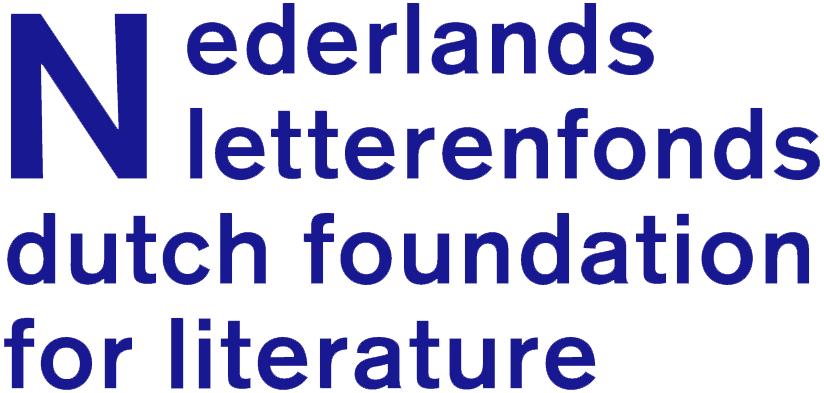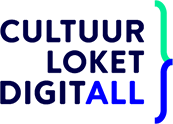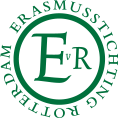Article
The importance of lyrical nonsense
“Poetry has neither head nor shoulders”
_w336.png)
January 23, 2013
For Hebrew poetry, which is largely lyrical, 2009 provided an unusual crop of books offering a broad array of the avant-garde, parody and nonsense. It saw the publication of an anthology of all of Hezy Leskly’s poetry, under discussion here, and the first of a projected four-volume collection of David Avidan’s work as well as new books by contemporary poets working in this vein such as Adi Assis, Roy Chicky Arad, Nimrod Kamer and Meira Marom.
Veteran Israeli poet Meir Wieseltier worked hard to see this complete collection of Hezy Leskly’s poetry into print. It includes four books – The Finger, 1986; Addition and Subtraction, 1988; The Mice and Lea Goldberg, 1992; and Dear Perverts, published after his death in 1994 – as well as previously unpublished poems. Wieseltier explains the need for the book in his afterword, saying that it comprises a vital element in forming a complete picture of Hebrew poetry, especially since Leskly’s work has been unavailable in bookstores for some time now. For me and many other poetry lovers, this marvelous volume, which saves Leskly’s poetry from oblivion, is one of the most significant editorial projects in Hebrew poetry of this decade.
Leskly was born in Rehovot, Israel, and grew up in Givatayim, a place mentioned often in his poetry; he died young, of AIDS, at the height of his creative powers. One of the first leaders of the homosexual community in Israel, he had the courage to publically out his sexual identity as an artist, and also to advance the interests of this community at a time when Israeli society’s receptiveness to gender differences was lower than it is now.
Nonsense is key to understanding Leskly’s work. Its presence in the poetry of the late 20th century requires that we approach particularities of influence, trends and nuances rather than viewing it as a totalizing element. Not all of Lesky’s poems feature nonsense, but it is present to some degree in most of them.
In general around the world, studies on the topic are sparse, in inverse proportion to the need to examine this fascinating and elusive phenomenon. In Israel, nonsense has not been surveyed historically and methodically, along with other significant trends connected to it such as humor, postmodernism and the bizarre. The educational system, including colleges and universities, has not approached the subject for obvious reasons: academic conservatism, haughtiness and because it is often out of touch with contemporary literature. To my mind, the lack of research in this field is one of the reasons that it is so hard to map Israeli poets who use or at least flirt with nonsense in their work: in addition to Leskly, there are David Avidan, Zali Gurevitch, Efrat Mishori, Zohar Eitan, Tomer Lichtash, Meira Marom and the young poets writing for the journal Ma’ayan, for example.
Nonsense poetry developed in Hebrew literature after the establishment of the state of Israel. Having produced a meaningful increase in the amount of humor in relation to the work of previous generations of Hebrew poets, it clearly signifies a broader phenomenon. It should be noted, however, that not all nonsense poems are funny, although to my taste, they work better when they are. Without humor, nonsense appears to be an analytic game.
Nonsense poetry is close in spirit to postmodernism, particularly in its use of carnival elements: a blurring of the hierarchies of high and low register, of traditional poetic forms and subjects; humor and performativity; skepticism about the ability of language to pin reality down and so on. Beyond gibberish (irrelevant in Leskly’s case), it has four main attributes that enable us to read such poetry without trying to use the ordinary binary logic of truth/lies, right/wrong and possible/impossible, and instead be attentive to the poem’s inner logic.
The first is, according to T. S. Eliot, that nonsense is a parody (a usually humorous imitation) of meaning. This linkage to parody is what creates a meaningful distinction between nonsense and a closely related literary form such as fantasy. The second major characteristic of nonsense is that it is mainly a linguistic rather than a narrative phenomenon. This does not mean that nonsense has no narrative aspect, but rather that plot is subordinate to linguistic needs: word play, sound, repetition and rhyme. The third characteristic is a preservation of the laws of composition and grammar in order to maintain the credibility of content. If nonsense did not adhere to the rules of composition, it would really be nonsensical. Finally, there is the matter of logic. Nonsense often creates a paradoxical situation in which two types of contradictory logic co-exist: the logic familiar to us in our lives, and a different, bizarre kind that contradicts what is real. This bizarre logic is opposed to what we know, but impersonates an empirical situation. Such an impersonation is meant to support the inner logic of a nonsensical situation with the goal of undermining conventional logic and significance. The speaker in a nonsense poem most often takes on the poker face of the stand-up comic.
In Leskly’s poetry, nonsense is most often lyrical, shaped by a series of bizarre logical analogies that create tension with reality: an extreme repetition of realistic concepts, the personification of objects and humor. The poem ‘Dance twenty-one’ is a good example of how the nonsense process works in much of his poetry.
Leskly was a choreographer and a dance critic for an Israeli weekly and dance features large in his poetry. In his second book, Addition and Subtraction, there is a terrific series of 36 poems called ‘Empty dances,’ of which this poem is one of the most beautiful, due to the acrobatic split it performs combining grotesque nonsense humor with delightful lyricism:
During the time of the great famine I ate
the food
on the plate
and the plate
under the food
and the table
under the plate
and the floor
under the table
and the foundations
under the floor
and the ground
under the foundations.
I left only complete emptiness behind
to cut my dance costume from.
The poem depicts a hysterical and bulimic consumption of food and objects, after which the speaker leaves emptiness on his plate as the spiritual raw material from which he will fashion dance clothes, that is, a work of art. The act of eating is real and metaphorical at the same time. Parodying the Hebrew cliché, “I’m so hungry I could eat a plate,” the speaker, who is not satisfied with his meal, compensates by eating objects. It would seem that there is no sublimation of the desire to eat via imaginary eating or pretense; the speaker really eats the objects, in a description that rests on a chronological continuum with the eating of real food.
Leskly here plays with and parodies the worn-out saying about eating one’s cake and having it too. Eating food and objects without eating empty space, which would seem to be edible too, grants the speaker the ability to dance simultaneously at two weddings and save himself from the limitations of conventional binary thinking: the speaker eats the emptiness (in the non-realistic eating of objects), but leaves it whole, which it would remain in any case because it is inedible. The parodical message is that salvation is located in the awareness of a paradoxical plane where two parallel options co-exist without cancelling each other out, and which options are under discussion doesn’t matter much. Linguistic reality and perhaps reality itself are paradoxical. They require us to stride beyond binary pairings – reality and imagination, truth and lie, full and empty – toward an experiential and metaphorical solution, that is, a non-verbal solution: to laugh at emptiness, as a release.
The poem provides an example of a characteristic hierarchy found in nonsense: form (repetition) subordinates content (eating). From this point on, reality (and the poem) are comprehensible only via an interpretation of an aesthetic, linguistic act and not through an arrangement of markers in reality, because they don’t actually exist in reality. Ironically, the poem is rooted, like all nonsense poetry, in concrete details (plate, table, the ground) but it does not describe the reality that is familiar to us in our lives.
The poem also refers to “the time of the great famine,” but we do not learn from the poem whether this is a specific biographical and/or historical period, or a metaphor for the desire to create, or both of these. In any case, this period is among other things the hunger of language for aesthetic significance and a new spirituality. The poem also ridicules the mythological-seeming “time of the great famine” while appropriating it into a creative hunger for poetry and dance. At the same time it ridicules the romantic idealization of the hungry, suffering artist and the anorexic tendency of dancers.
The stylized and logical, polished poetic design of ‘Dance twenty-one’ teaches us that nonsense is not nonsense or a joke, or arbitrary and anarchic. In its original way, the poem manages to embody – with humor and play as well as analytically, methodically and precisely – complex and profound world views of original and refreshing ways of producing significance.
I hate poetry/ for three/ reasons./ First: I can’t rest my head on poetry’s shoulders./ Second: poetry can’t rest its head on my shoulders./ Third: poetry has neither head nor shoulders./ And there is also a fourth reason. ('THREE REASONS' by Hezy Leskly)
For Hebrew poetry, which is largely lyrical, 2009 provided an unusual crop of books offering a broad array of the avant-garde, parody and nonsense. It saw the publication of an anthology of all of Hezy Leskly’s poetry, under discussion here, and the first of a projected four-volume collection of David Avidan’s work as well as new books by contemporary poets working in this vein such as Adi Assis, Roy Chicky Arad, Nimrod Kamer and Meira Marom.
Veteran Israeli poet Meir Wieseltier worked hard to see this complete collection of Hezy Leskly’s poetry into print. It includes four books – The Finger, 1986; Addition and Subtraction, 1988; The Mice and Lea Goldberg, 1992; and Dear Perverts, published after his death in 1994 – as well as previously unpublished poems. Wieseltier explains the need for the book in his afterword, saying that it comprises a vital element in forming a complete picture of Hebrew poetry, especially since Leskly’s work has been unavailable in bookstores for some time now. For me and many other poetry lovers, this marvelous volume, which saves Leskly’s poetry from oblivion, is one of the most significant editorial projects in Hebrew poetry of this decade.
Leskly was born in Rehovot, Israel, and grew up in Givatayim, a place mentioned often in his poetry; he died young, of AIDS, at the height of his creative powers. One of the first leaders of the homosexual community in Israel, he had the courage to publically out his sexual identity as an artist, and also to advance the interests of this community at a time when Israeli society’s receptiveness to gender differences was lower than it is now.
Nonsense is key to understanding Leskly’s work. Its presence in the poetry of the late 20th century requires that we approach particularities of influence, trends and nuances rather than viewing it as a totalizing element. Not all of Lesky’s poems feature nonsense, but it is present to some degree in most of them.
In general around the world, studies on the topic are sparse, in inverse proportion to the need to examine this fascinating and elusive phenomenon. In Israel, nonsense has not been surveyed historically and methodically, along with other significant trends connected to it such as humor, postmodernism and the bizarre. The educational system, including colleges and universities, has not approached the subject for obvious reasons: academic conservatism, haughtiness and because it is often out of touch with contemporary literature. To my mind, the lack of research in this field is one of the reasons that it is so hard to map Israeli poets who use or at least flirt with nonsense in their work: in addition to Leskly, there are David Avidan, Zali Gurevitch, Efrat Mishori, Zohar Eitan, Tomer Lichtash, Meira Marom and the young poets writing for the journal Ma’ayan, for example.
Nonsense poetry developed in Hebrew literature after the establishment of the state of Israel. Having produced a meaningful increase in the amount of humor in relation to the work of previous generations of Hebrew poets, it clearly signifies a broader phenomenon. It should be noted, however, that not all nonsense poems are funny, although to my taste, they work better when they are. Without humor, nonsense appears to be an analytic game.
Nonsense poetry is close in spirit to postmodernism, particularly in its use of carnival elements: a blurring of the hierarchies of high and low register, of traditional poetic forms and subjects; humor and performativity; skepticism about the ability of language to pin reality down and so on. Beyond gibberish (irrelevant in Leskly’s case), it has four main attributes that enable us to read such poetry without trying to use the ordinary binary logic of truth/lies, right/wrong and possible/impossible, and instead be attentive to the poem’s inner logic.
The first is, according to T. S. Eliot, that nonsense is a parody (a usually humorous imitation) of meaning. This linkage to parody is what creates a meaningful distinction between nonsense and a closely related literary form such as fantasy. The second major characteristic of nonsense is that it is mainly a linguistic rather than a narrative phenomenon. This does not mean that nonsense has no narrative aspect, but rather that plot is subordinate to linguistic needs: word play, sound, repetition and rhyme. The third characteristic is a preservation of the laws of composition and grammar in order to maintain the credibility of content. If nonsense did not adhere to the rules of composition, it would really be nonsensical. Finally, there is the matter of logic. Nonsense often creates a paradoxical situation in which two types of contradictory logic co-exist: the logic familiar to us in our lives, and a different, bizarre kind that contradicts what is real. This bizarre logic is opposed to what we know, but impersonates an empirical situation. Such an impersonation is meant to support the inner logic of a nonsensical situation with the goal of undermining conventional logic and significance. The speaker in a nonsense poem most often takes on the poker face of the stand-up comic.
In Leskly’s poetry, nonsense is most often lyrical, shaped by a series of bizarre logical analogies that create tension with reality: an extreme repetition of realistic concepts, the personification of objects and humor. The poem ‘Dance twenty-one’ is a good example of how the nonsense process works in much of his poetry.
Leskly was a choreographer and a dance critic for an Israeli weekly and dance features large in his poetry. In his second book, Addition and Subtraction, there is a terrific series of 36 poems called ‘Empty dances,’ of which this poem is one of the most beautiful, due to the acrobatic split it performs combining grotesque nonsense humor with delightful lyricism:
During the time of the great famine I ate
the food
on the plate
and the plate
under the food
and the table
under the plate
and the floor
under the table
and the foundations
under the floor
and the ground
under the foundations.
I left only complete emptiness behind
to cut my dance costume from.
The poem depicts a hysterical and bulimic consumption of food and objects, after which the speaker leaves emptiness on his plate as the spiritual raw material from which he will fashion dance clothes, that is, a work of art. The act of eating is real and metaphorical at the same time. Parodying the Hebrew cliché, “I’m so hungry I could eat a plate,” the speaker, who is not satisfied with his meal, compensates by eating objects. It would seem that there is no sublimation of the desire to eat via imaginary eating or pretense; the speaker really eats the objects, in a description that rests on a chronological continuum with the eating of real food.
Leskly here plays with and parodies the worn-out saying about eating one’s cake and having it too. Eating food and objects without eating empty space, which would seem to be edible too, grants the speaker the ability to dance simultaneously at two weddings and save himself from the limitations of conventional binary thinking: the speaker eats the emptiness (in the non-realistic eating of objects), but leaves it whole, which it would remain in any case because it is inedible. The parodical message is that salvation is located in the awareness of a paradoxical plane where two parallel options co-exist without cancelling each other out, and which options are under discussion doesn’t matter much. Linguistic reality and perhaps reality itself are paradoxical. They require us to stride beyond binary pairings – reality and imagination, truth and lie, full and empty – toward an experiential and metaphorical solution, that is, a non-verbal solution: to laugh at emptiness, as a release.
The poem provides an example of a characteristic hierarchy found in nonsense: form (repetition) subordinates content (eating). From this point on, reality (and the poem) are comprehensible only via an interpretation of an aesthetic, linguistic act and not through an arrangement of markers in reality, because they don’t actually exist in reality. Ironically, the poem is rooted, like all nonsense poetry, in concrete details (plate, table, the ground) but it does not describe the reality that is familiar to us in our lives.
The poem also refers to “the time of the great famine,” but we do not learn from the poem whether this is a specific biographical and/or historical period, or a metaphor for the desire to create, or both of these. In any case, this period is among other things the hunger of language for aesthetic significance and a new spirituality. The poem also ridicules the mythological-seeming “time of the great famine” while appropriating it into a creative hunger for poetry and dance. At the same time it ridicules the romantic idealization of the hungry, suffering artist and the anorexic tendency of dancers.
The stylized and logical, polished poetic design of ‘Dance twenty-one’ teaches us that nonsense is not nonsense or a joke, or arbitrary and anarchic. In its original way, the poem manages to embody – with humor and play as well as analytically, methodically and precisely – complex and profound world views of original and refreshing ways of producing significance.
© Gilad Meiri
Translator: Lisa Katz
Source: On Hezy Leskly’s Beh’air halav beh-emtsa ear (A well of milk in the middle of a city), Tel Aviv, Am Oved, 2009. Reviewed in Mekor Rishon, 16 October 2009, 18.
Sponsors
























